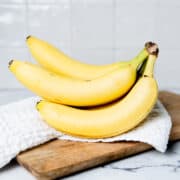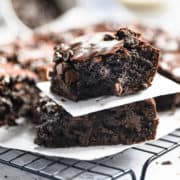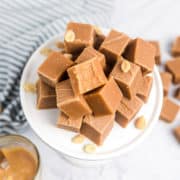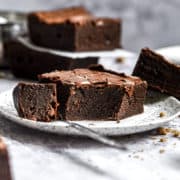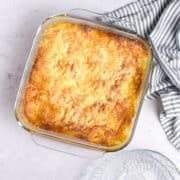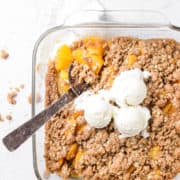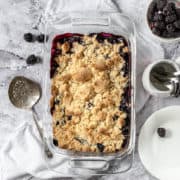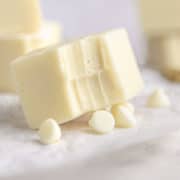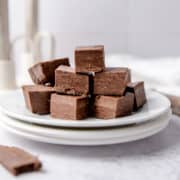Bananas need very little in the way of introduction since they're known and enjoyed all over the world. These distinctive yellow fruits can be served in plenty of different ways, eaten by themselves as a snack, or used to make desserts. Read on to find out how to store bananas so you can enjoy them perfectly ripe.
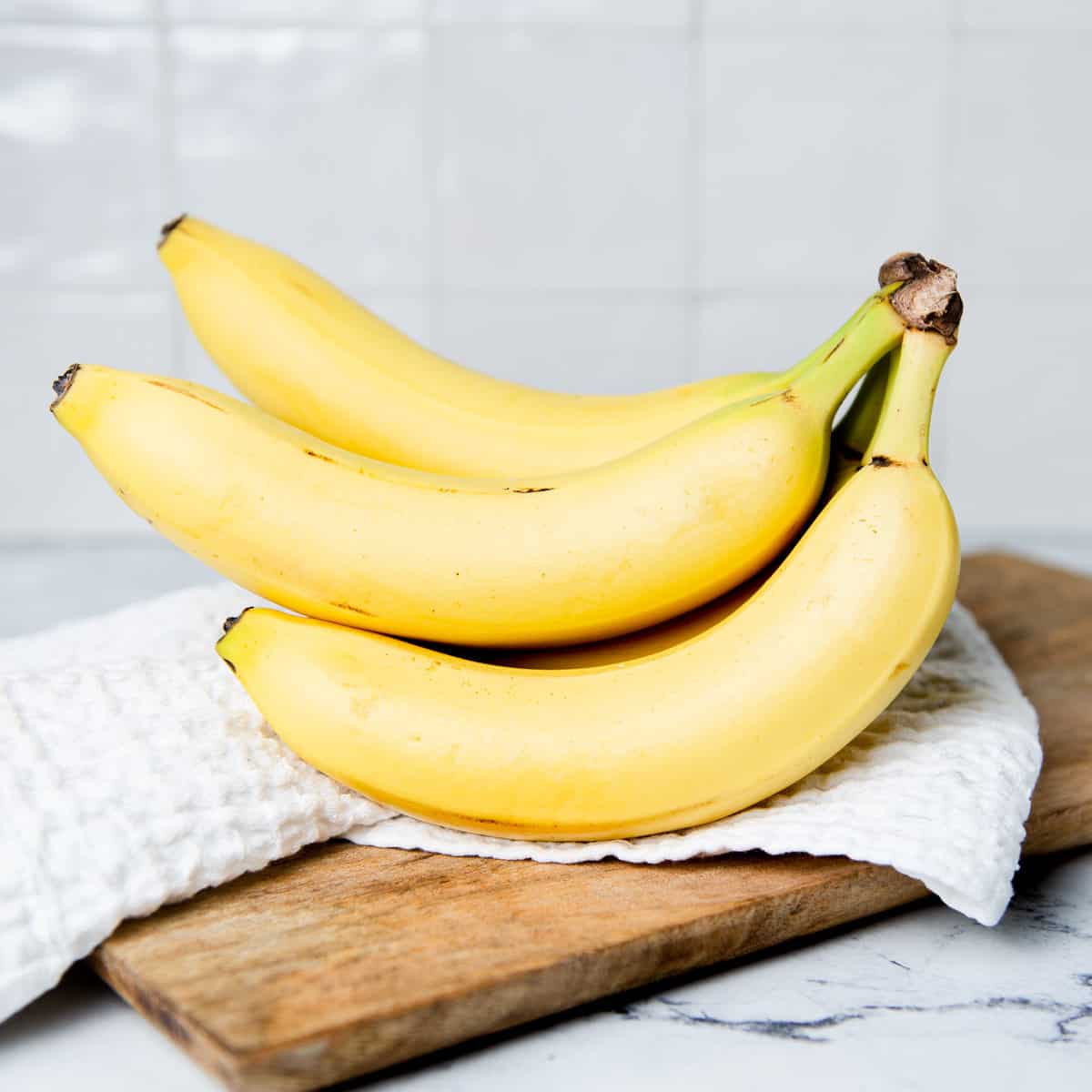
Jump to:
Bananas star in all kinds of delicious dishes, including drinks like a banana milkshake, muffins, cupcakes, and fudge. They're available in just about every grocery store and most people enjoy the flavor.
I love to make banana pancakes for the family. I mix a couple of eggs with a banana and then fry the mixture as pancakes. Yes, you only need 2 ingredients! It's such an easy recipe and you can add whatever you want, like chocolate chips, vanilla, or even blueberries.
Not only are bananas a particularly tasty fruit, but they're a good source of potassium, fiber, Vitamins B6 and C, various antioxidants, and phytonutrients too. Bananas are a good energy source and make a good snack before or after a workout.
What are Bananas?
Bananas (Musa) are yellow fruits, which vary in size, shape, and firmness. The skin isn't always yellow. There are also red, purple, green, and brown-skinned varieties. They are thought to be the first cultivated fruit ever because evidence of cultivating bananas has been found in New Guinea dating back to around 8000 BC.
The word "banana" typically refers to dessert bananas (the sweet kind) while "plantain" bananas are starchier, less sweet, and more firm. Plantains are often chopped, fried, and served as a side dish. They can also be boiled or baked. Dessert bananas are more likely to be enjoyed raw or found in dishes such as banana pudding.
The most common banana cultivar in grocery stores is the Cavendish banana, but you might have seen other types of bananas too. Lady finger bananas are thinner than Cavendish and a bit shorter, although the flavor is very similar.
Red bananas are short and fat with a creamy texture and sweet taste. There are different varieties, but all bananas have a similar taste.
Tips for Buying Bananas
Under-ripe bananas are green or greenish-yellow. You can eat them this way, but most people prefer to wait for the natural ripening process to make them softer and sweeter.
A ripe banana will be yellow with a few black or brown spots. Overripe bananas will have more brown than yellow, but can still be used in recipes such as banana muffins or banana bread!
A completely brown or black banana is way beyond its prime. You can pretty much tell exactly how ripe a banana is by its color, but do check for any discoloration or mold before buying. Also, bear in mind a dull-looking or gray-tinged banana has been refrigerated and might not ripen properly.
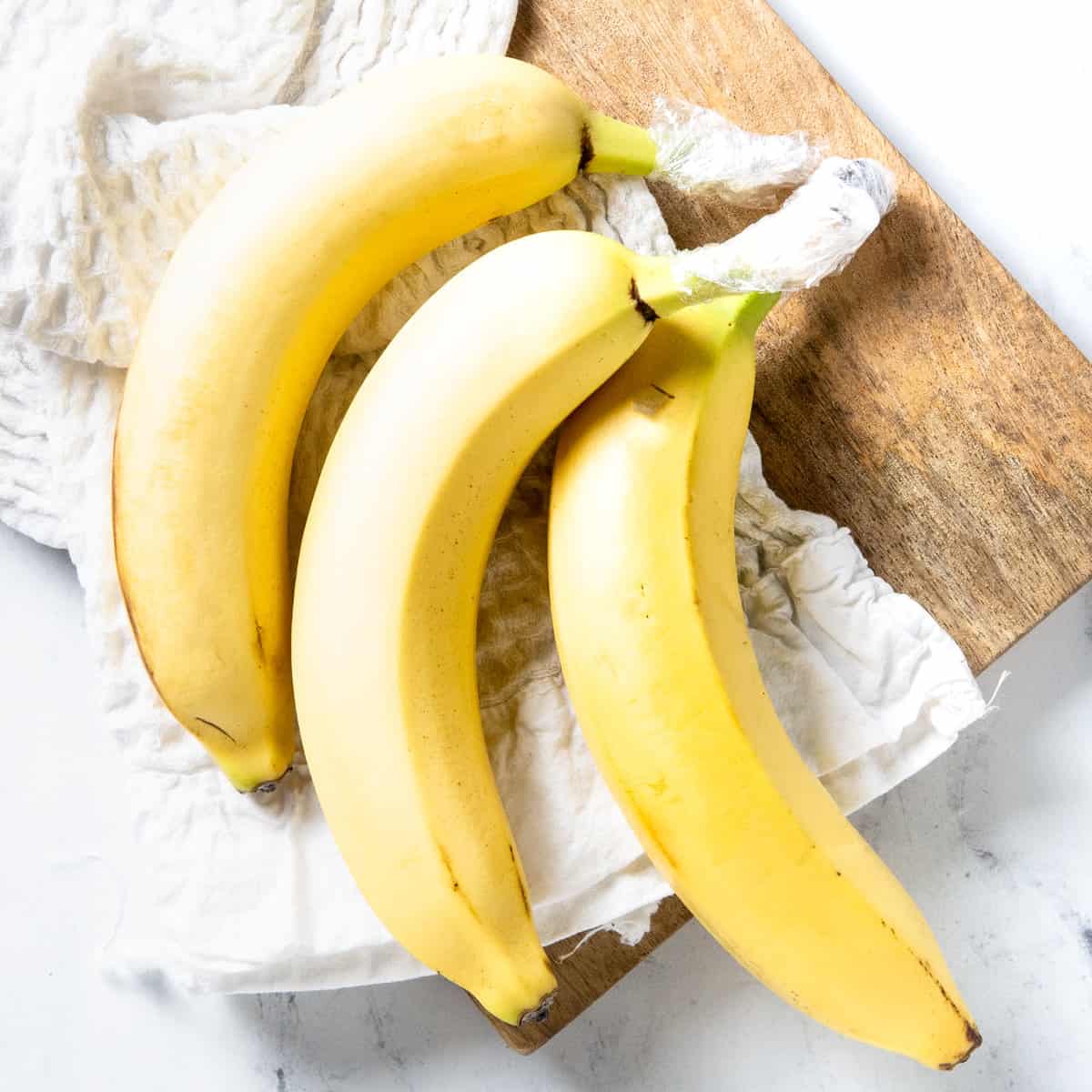
How to Store Bananas
The best way to store bananas depends on how ripe they are and whether you want them to ripen more or if you're planning to use them right away. The following tips should be helpful.
- Remove bananas from their plastic bag as soon as you get them home. Plastic wrap traps moisture which speeds up the rate of spoilage.
- Green unripe bananas should be kept out of direct sunlight at room temperature, since they won't ripen if they are cold. Add them to a fruit bowl on the kitchen counter and keep an eye on the ripening process.
- Green bananas or greenish-yellow ones will take a few days to fully ripen.
- A banana tree is a good investment if you eat a lot of this fruit. You can get a wooden banana tree or a banana hanger to keep air flowing around the fruit and prevent bruising.
- Ripe bananas, which are yellow with minimal brown spots, will be fine for a few days at room temperature (unless you're somewhere hot, in which case they can attract fruit flies).
- Ripe bananas can also be kept in the crisper drawer of the fridge which will slow down, but not prevent further ripening. Refrigerated bananas might turn black, but inside they're fine.
- If you don't want your bananas to ripen anymore, wrap the banana stems in plastic wrap to prevent the release of ethylene gas which will ripen them further.
- Already sliced your bunch of bananas? Toss the slices in citrus juice like lemon or lime juice, or pineapple juice which also works (to prevent browning), and then refrigerate in an airtight container and use within a couple of days.
You can also freeze bananas. The easiest way is to peel and chop or slice them, then freeze the banana slices on an aluminum foil or parchment paper lined baking sheet, before transferring them into a freezer bag or airtight container. Another idea is mashing them.
Thawed bananas taste good but have a mushy texture, making them ideal for smoothies, muffins, banana bread, or similar. So if you find yourself with bunches of bananas that need to be used, freezing them is a great solution.
How to Identify Rotten Bananas
If you see mold on the banana peel, it's definitely a bad bunch. Soft and squishy bananas are nearly all brown or black and are also spoiled.
However, keep in mind that if you refrigerate bananas the skin will turn dark but they will still be fine inside after you peel them. Also, some banana varieties naturally have brown or reddish-brown skin.
Common Questions
If your yellow bananas aren't quite ripe enough for your liking, there's a great way to speed up the process. The peels give off ethylene gas as they ripen and the more of this gas there is around the bananas the quicker they will ripen. Put whole bananas in a paper bag so the gas is trapped in there with the banana. Don't use a plastic bag because this will do the opposite and slow down the ripening. You can also add other fruits (maybe apple, avocado, pear, or apricot) to the paper bag with the bananas since they also give off ethylene gas.
If you like to keep your bananas in a fruit basket at room temperature, you can expect 2 or 3 days until they start to become too ripe. If you want to make banana bread with this popular tropical fruit though, you can leave them for longer periods of time.

Did You Know?
Someone who's allergic to bananas, or even chestnuts or avocados, has a higher risk of also being allergic to latex because they all share similar proteins.
- It might surprise you to know that while a strawberry is not botanically a berry, a banana is! The reason behind this is a berry has seeds inside its flesh and not outside.
- Green bananas are high in starch. As they ripen and turn yellow, the starch turns into sugar.
Knowing how to store bananas to keep them perfectly fresh means you can rustle up anything from a delicious fruit salad to homemade banana bread or banana pudding. Fresh bananas are full of flavor and also offer a variety of nutrients.
